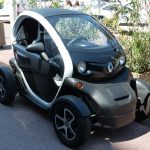Machine segregates waste within minutes

As waste segregation has become one of the issues in the country, several people are focusing on this to solve it.
Nivedha from Bengaluru is a chemical engineering graduate. While she was studying her third year, she along with friends cleaned an unclean area which is compiled with waste. However, the area again was dumped with waste in less than a week.
Then, Nivedha identified that there should be a solution which is a reactive approach to handle the issue of waste.
The biggest problem in dealing with waste is waste segregation. Several awareness camps have been conducted on waste segregation due to which some changes were seen. Yet, unskilled labourers who collect the waste were mixing them to get more money when they sold it.
Later in her extensive survey, Nivedha found that about 95 per cent of waste generated in India is unsegregated. She also realized that there is no technology that could handle mixed waste.
Within six months, Nivedha built a small system based on the principle of leveraging the difference between biodegradable and non-biodegradable waste due to their moisturized content.
Biodegradable waste has 90 per cent moisture, whereas non-biodegradable waste has 40 per cent moisture.
She built a prototype which efficiently could process a 1-kg waste. She decided to scale it up to a 50-kg-per-hour model, but due to lack of funds, she could not do so.
She applied for a flagship programme of the Karnataka Government and stood in the top 100 by competing with over 3,500 startups.
She made a 50-kg-per-hour prototype from the Elevate 100 funding and installed it in an apartment complex with 150 homes.
However, in order to study the large impact, she wanted to design a machine that could process 250 kgs of waste to be installed at a dumpsite in the municipality. Saurabh Jain, a CA and an electronics engineer, supported her by mentoring her idea.
After spending more than five months, the duo succeeded in designing the machine which works with over 90 per cent efficiency at any given time.
Image Reference: Thebetterindia










Leave a Reply